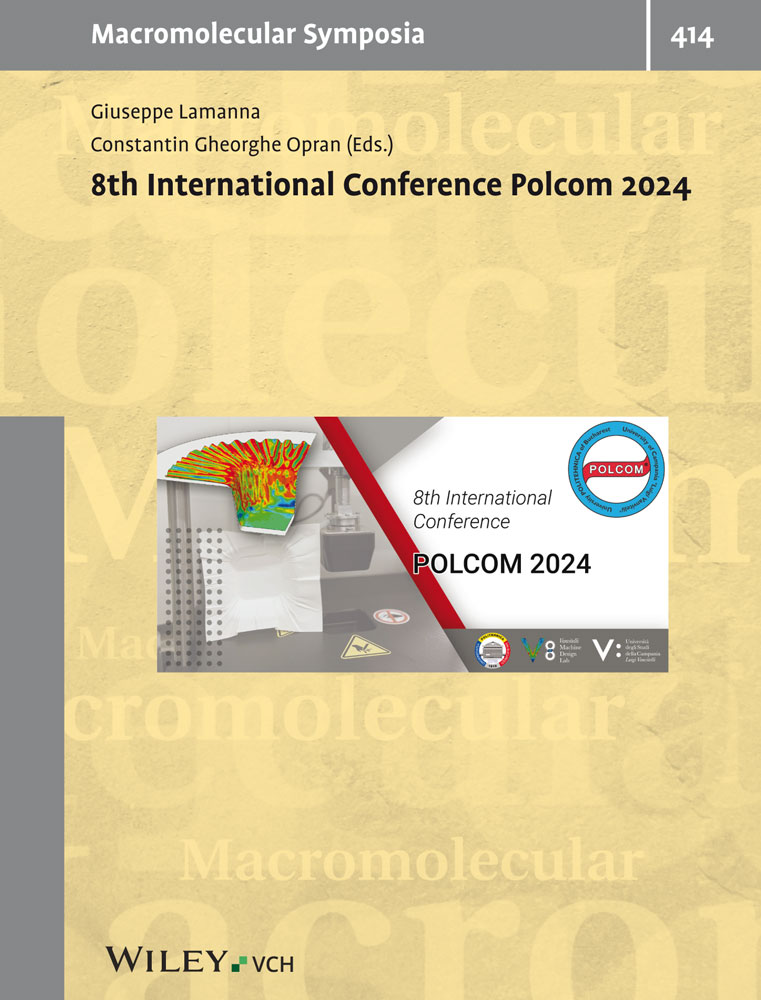Crystallization behavior and thermal properties of blends of poly(3-hydroxybutyate-co-3-valerate) and poly(1,2-propandiolcarbonate)
Abstract
Crystallization behavior of blends of poly(3-hydroxybutyrate-co-3-hydroxyvalerate) (PHBV) and poly(1,2-propandiolcarbonate) (PR(CO2)) has been investigated by polarized light microscopy (PLM). The spherulite growth rates (SGR) of all blends were faster than that of pure PHBV, and the spherulite growth rates of PHBV in the PHBV/PR(CO2) blends reduced with increasing PR(CO2) weight fraction. There are two melting peaks in both the pure PHBV and the PHBV/PR(CO2) blends. The melting peak of PHBV/PR(CO2) blends was reduced by lower temperature about 20K as compared to PHBV and the higher temperature melting peak was increased by about 10K in the blends.




